|
|
Plants
Salt Marsh Plant Communities
Alkali Marsh Plant Community
Generally dominated by herbaceous emergent plants,
these plant communities are usually situated on the edge
of playas or dry lakes. Such communities often consist of
dense carpets of plants, interrupted only by deep open water
pockets, clay soil hardpans, or sand islands. The highly alkaline soils
underlying these communities are saturated most of the year and occasionally
"puff" up as a result of surface saturation - a playa characteristic sometimes
referred to as "self-rising" soils. The bright white, salt-encrusted appearance
of these soils are also indicative of high salt levels. Plant species common
to the Alkali Marsh Community at
Harper Dry Lake
include the relatively tall desert cattail (Typhus dominguensis), the more common
alkali bulrush (Scirpus robustis), the meadow-forming saltgrass (Distichlis spicata)
and the tiny, red-hued pickleweed (Salicornia utahensis)
Desert Sink Scrub Plant Community
Comprised primarily of woody and succulent shrub species from the Goosefoot
Family, that persist for periods of two to five years,
Desert Sink Scrub Communities are usually situated between Alkali
Marsh and Saltbush Scrub Plant Communities. Soils that underly these
communities are occasionally salt-encrusted, highly
alkaline and poorly drained. Shrub species common to this community
type at Harper Dry Lake include desert holly (Atriplex
hymenelytra), bush seepweed (Suaeda moquinii), alkali heath (Frankenia salina),
red molly (Kochia californica) and five-horn smother-weed (Bassia hyssopifolia).
Saltbrush Scrub Plant Community
Comprised primarily of perennial shrubs or plants that continue to grow
for several years, Saltbush Scrub Communities are dominated by woody, gray members
of the Atriplex genus. The soils underlying these communities are fine-textured
and usually poorly drained, but are usually located on higher elevation, less
saturated ground than either Alkali Marsh or Desert Sink Scrub Plant Communities.
Saltbush species common to Harper Dry Lake include fourwing saltbush (Atriplex
canescens), shadescale (Aptriplex confertifolia), Mojave Saltbush (Atriplex
spinifera), and allscale (Atriplex polycarpa). Fleshy-fruited, spine-bearing
shrubs also common to this community include Anderson's boxthorn
(Lycium andersonii) and rabbit-thorn (Lycium pallidum).
|
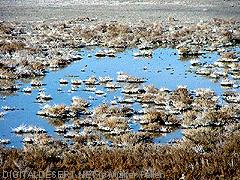
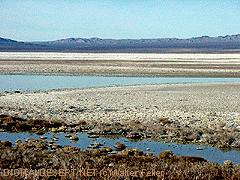
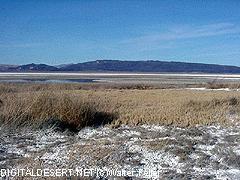
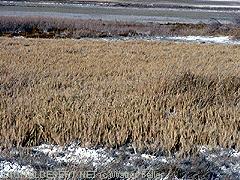
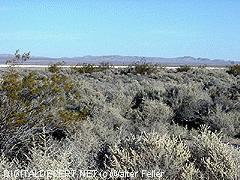
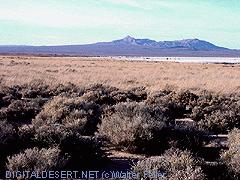
|





